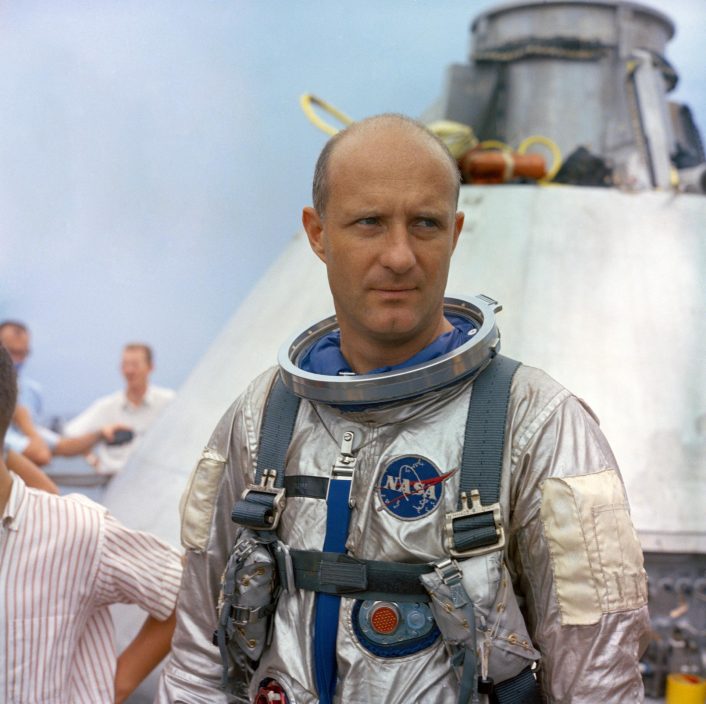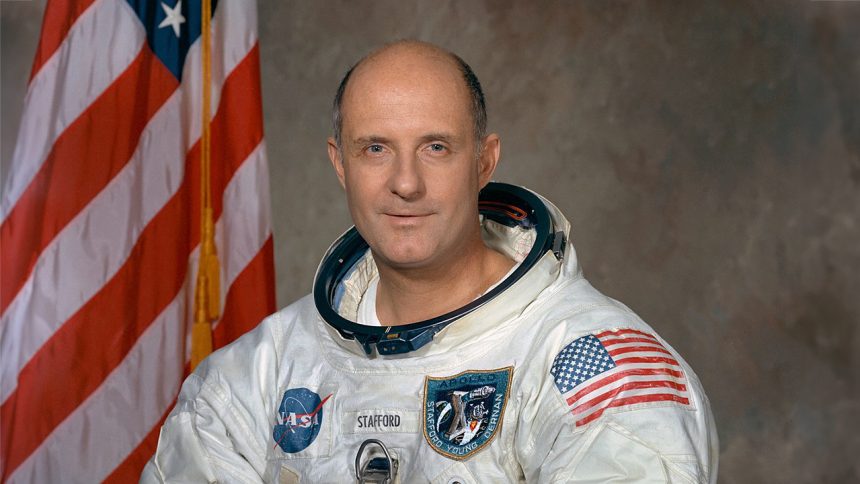Stafford Helped Lead Space Race During Gemini and Apollo, Was Exemplary Air Force Test Pilot School Leader and Annapolis Graduate.
The world has lost astronaut, test pilot, scientist and adventurer Thomas Stafford today, Mar. 18, 2024. He was 93. Stafford was one of 12 humans to walk on the lunar surface during Apollo moon landings. Stafford acted as command astronaut on the Apollo 10 lunar mission.
A graduate of the U.S. Naval Academy at Annapolis, Stafford actually earned a commission as an officer in the Air Force, becoming a fighter pilot in the U.S. Air Force F-86 Sabre. In his role as an active air defense pilot, he guarded the frozen northern air routes at the emergence of the Cold War. From here, he went on to the U.S. Air Force Test Pilot School, acknowledged as the most demanding academic and flight instruction in the world.
After becoming a test pilot, he attended Harvard University. At nearly the same time, he was selected as a NASA astronaut candidate in September 1962, as the space race with the former Soviet Union reached its peak.
Stafford excelled as an astronaut. He flew into space on two early Gemini missions, a period in U.S. space flight that was marked by astronaut fatalities, near fatalities, accidents and extreme risk. Always courageous, calm and confident, Stafford was a major force in maintaining confidence in the U.S. space program as it hurtled forward, sometimes at a reckless pace, under the directive of then-President John F. Kennedy prior to his assassination in late 1963.

Stafford’s success during the Apollo program bent the arc of human history. It remains perhaps the most significant segment of his triumphant legacy.
Following his resounding success at NASA, Stafford actually returned to the U.S. Air Force Test Pilot School at Edwards Air Force Base as its commander. But in a remarkable chapter of his life that remained entirely secret, he was instrumental in the debriefing of Soviet defector Viktor Belenko after Belenko flew his MiG-25 Foxbat to Hokodate Airport in Northern Japan on Sept. 26, 1976. Stafford also went on to secretly contribute to the testing of the Lockheed F-117 Nighthawk, the first “stealth fighter”, that played a pivotal role in Operation Desert Storm and influenced the design and operational doctrine of low observable “stealth” aircraft to this day.









